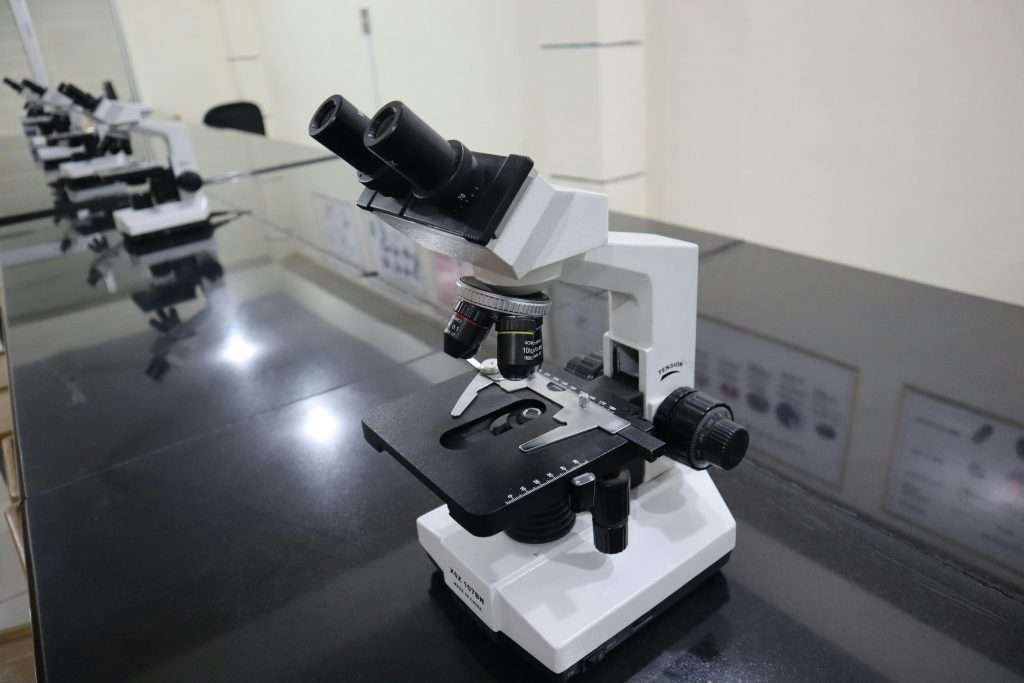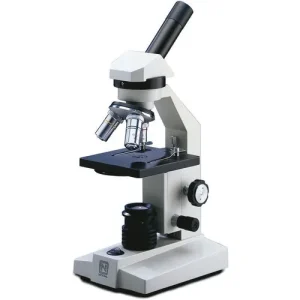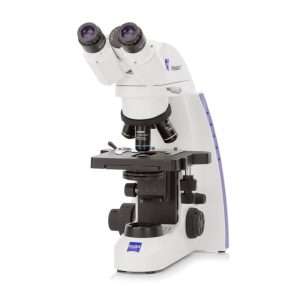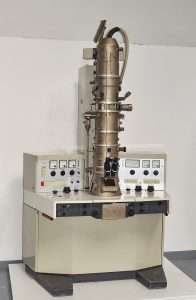Written by Microscopehunt Authority
.

Complete Guide to Microscope Selection: What is a Microscope?
Complete Guide to Microscope Selection: A microscope is a scientific instrument that magnifies small objects to make them visible to the human eye. It is essential for viewing objects too small to be seen without magnification, such as cells, microorganisms, and fine details of materials. Microscopes are widely used in fields like biology, medicine, and research to explore structures that are otherwise invisible to the naked eye.
Essential Functions of a Microscope in a Laboratory Setting
Complete Guide to Microscope Selection: In a laboratory setting, the primary function of a microscope is to provide magnification, enabling scientists, doctors, and researchers to study tiny samples in great detail. This is crucial for identifying microorganisms, analyzing cells, and performing experiments that require precise observation. The microscope helps in examining the structure of cells, tissues, and various specimens, which aids in making important scientific discoveries and medical diagnoses.
Types of Microscopes Available

There are several types of microscopes available, each designed for specific tasks. The most common types include –
Compound Microscopes:
These use multiple lenses to achieve high magnification and are often used to observe small, thin specimens such as cells or bacteria.
Stereo Microscopes:
Also known as dissecting microscopes, these provide a 3D view and are used to examine larger, thicker objects like insects, leaves, or small mechanical parts.
Electron Microscopes:
These use electron beams instead of light to achieve extremely high magnification and resolution, ideal for studying structures at the molecular level.
Confocal Microscopes:
These are equipped with a laser light source, providing high-resolution, 3D images of specimens, commonly used in biological and material science research.
Working Principles and Applications of Each Type of Microscope
Each type of microscope has its own operating principles and specific applications –
Compound Microscopes:
These microscopes use a system of lenses to focus light on the specimen, achieving high magnification (usually 40x to 1000x). They are perfect for viewing thin, transparent samples such as cells, bacteria, and tissues.
Stereo Microscopes:
Stereo microscopes provide a three-dimensional view by using two separate light sources. This makes them ideal for examining larger objects with more depth, such as insects, plants, or small mechanical parts.
Electron Microscopes:
These are used in high-resolution imaging, often achieving magnifications over a million times. They are particularly useful in advanced research for studying viruses, molecules, and other nanoscale structures.
Confocal Microscopes:
With laser light, these microscopes provide sharp, clear images of thick specimens and can be used for 3D imaging. They are widely used in molecular biology, genetics, and materials science for detailed cellular studies.
How to Choose the Right Microscope for Your Lab Workflow
Selecting the right microscope depends on the specific needs of your laboratory work. If you’re focusing on detailed study of small biological specimens, a compound microscope is usually the best choice. For tasks that involve examining larger objects, such as dissection or material inspection, a stereo microscope would be more suitable. Also, consider whether your work requires higher magnification or the ability to view samples in 3D, as this will influence the type of microscope you should purchase.
Features and Factors to Consider When Purchasing a Microscope
When purchasing a microscope, there are several key features and factors to take into account –
Magnification Power:
Make sure the microscope provides the magnification needed for your work. Compound microscopes typically offer high magnification (up to 1000x), while stereo microscopes offer lower magnification (usually up to 50x).
Resolution:
A higher resolution allows for clearer, sharper images. Ensure that the microscope you choose offers the necessary resolving power to view fine details of your specimens.
Eyepiece and Objectives:
The eyepiece magnification (usually 10x or 15x) combined with the objective lenses (which can range from 4x to 100x) determines the overall magnification.
Lighting:
The light source plays a crucial role in achieving clear and bright images. There are different lighting options available, each with their own advantages and considerations.
Compound vs. Stereo Microscopes: Which One Should You Choose?

The choice between a compound microscope and a stereo microscope depends largely on the nature of your work –
Compound microscopes offer high magnification, making them ideal for studying small, thin specimens such as bacteria, cells, and tissues. They are perfect for biological research.
.
Stereo microscopes offer lower magnification but allow for 3D viewing, making them great for examining larger specimens like insects, plants, and materials. These are ideal for tasks such as dissection, repair work, or inspection of larger objects.
Magnification and Application Differences Between Compound and Stereo Microscopes
The magnification power and applications of compound and stereo microscopes differ significantly –
Compound microscopes typically provide magnification between 40x and 1000x, making them ideal for examining tiny, transparent specimens like cells, bacteria, and tissues.
.
Stereo microscopes generally offer lower magnification levels, usually ranging from 10x to 50x. However, their ability to provide a 3D view makes them better for observing larger objects, such as mechanical parts, plants, or insects
Choosing the Right Light Source for Your Microscope
The light source is an important factor in achieving high-quality images. Different light sources have distinct advantages –
LED:
LED light sources are energy-efficient, long-lasting, and provide consistent, bright illumination. They are commonly used in modern microscopes.
Halogen:
Halogen light bulbs offer bright, white light and good color rendering, but they generate more heat and consume more energy than LED lights.
Tungsten/Incandescent:
These light sources are inexpensive but consume more energy and generate a lot of heat.
Fluorescent:
Fluorescent light is ideal for use with certain types of microscopy, such as fluorescence microscopy, where specific wavelengths of light are required to view fluorescently tagged specimens.
Advantages and Disadvantages of Different Light Sources

Each light source type comes with its own set of pros and cons –
LED:
The benefits include long lifespan, low power consumption, and cool operation. However, LED lights may not offer the same color rendering as halogen lights.
Halogen:
Offers better color accuracy and brightness, but consumes more energy and can generate excess heat.
Tungsten/Incandescent:
These light sources are inexpensive, but they use more energy and have a shorter lifespan compared to LEDs.
Fluorescent:
Best for specialized applications like fluorescence microscopy but may require expensive filters and a higher level of expertise.
How is Magnification Calculated in a Microscope?
Magnification in a microscope is calculated by multiplying the magnification of the eyepiece by the magnification of the objective lens. For example, if you use a 10x eyepiece and a 40x objective lens, the total magnification will be 400x. This allows for a detailed view of small specimens that require higher magnification.
Types of Eyepieces and Objective Lenses
Eyepieces and objective lenses come in various magnifications & types –
Eyepieces:
The most common eyepiece magnification is 10x, but some microscopes offer 15x or other variations.
Objective Lenses:
Objective lenses typically range from 4x (low magnification) to 100x (high magnification). Some microscopes allow you to switch between multiple objective lenses to achieve different magnifications.
Quality Factors to Consider When Selecting a Microscope
When selecting a microscope, quality is key. Consider the following factors –
Optical Quality:
Look for microscopes with high-quality lenses that offer clarity and precision.
Stability and Durability:
Ensure the microscope is well-built and stable during use. A sturdy base and body will contribute to better performance and longevity.
Ease of Use:
Consider the microscope’s ease of operation, such as comfortable eyepiece positioning and smooth focusing mechanisms.
How Materials Affect Durability and Performance
The construction and materials used in a microscope can significantly affect its durability and performance. Microscopes made from high-quality metal parts, such as stainless steel or aluminum, tend to last longer and provide better stability compared to cheaper plastic models. Additionally, quality optics, such as coated lenses, enhance image clarity and light transmission.
Applications to Consider When Purchasing a Microscope
When purchasing a microscope, consider what you need it for. For instance:
Biological research often requires a compound microscope for studying cells and tissues.
Material science or forensic labs might need a stereo microscope for inspecting objects in 3D.
Electron microscopes are used in advanced research and nanotechnology due to their ability to examine extremely small structures.
Specific Microscopy Methods and Their Applications
Different microscopy methods, such as dark-field, phase-contrast, and epifluorescence, are used for specific applications:
Dark-field microscopy enhances the contrast of transparent or unstained specimens, making it ideal for viewing live cells and microorganisms.
Phase-contrast microscopy allows the viewing of live, unstained cells by enhancing differences in phase. It’s often used for studying biological samples in motion.
Epifluorescence microscopy uses fluorescent dyes to highlight specific structures in cells, making it useful for molecular biology and genetic research.
Where to Find High-Quality Microscopes for Laboratory Use
High-quality microscopes can be purchased from specialized scientific equipment suppliers, online marketplaces, or directly from well-known manufacturers. Look for trusted vendors who offer a wide range of microscopes and provide warranties and customer support.
Complete Guide to Microscope Selection: Recommendations for Purchasing from Reliable Vendors
When buying a microscope, ensure you’re purchasing from a reputable source. Look for vendors that specialize in scientific equipment and offer after-sales support, maintenance, and warranties. Checking customer reviews and manufacturer certifications can also help ensure you’re getting a quality product. Popular microscope brands like Olympus, Nikon, and Leica are known for their reliability and high performance.
By considering these factors, you can choose a microscope that fits your needs, whether you’re a student, researcher, or professional in the scientific community.
conclusion
In conclusion, the Complete Guide to Microscope Selection is your ultimate companion for choosing the perfect microscope. This Complete Guide to Microscope Selection provides detailed insights into the types, features, and applications of microscopes, helping you make an informed decision. Whether you’re a professional researcher, educator, or hobbyist, the Complete Guide to Microscope Selection ensures you find a microscope that aligns with your unique needs. With this Complete Guide to Microscope Selection, you can confidently explore the microscopic world and unlock endless possibilities. Trust the Complete Guide to Microscope Selection to guide you every step of the way in finding the best fit for your microscopy journey.
